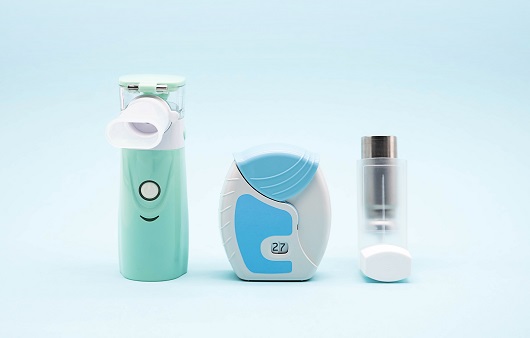November 16 of each year is World COPD Day. It was established in 2002 to raise awareness and interest in chronic obstructive pulmonary disease (COPD). The World Health Organization (WHO) announced the top 10 leading causes of death worldwide in 2020, placing chronic obstructive pulmonary disease as the third leading cause of death. By 2050, chronic obstructive pulmonary disease is expected to become the leading cause of death worldwide.
The situation in our country is not very different. It is a very common disease affecting 1 in 5 adults over the age of 45 and 1 in 3 adults over the age of 65 in Korea. However, due to lack of awareness about chronic obstructive pulmonary disease, most patients don’t even know they have it. In fact, according to the Health Insurance Review and Assessment Service, only 2.8 percent of those who acknowledged they were patients went to the hospital after their symptoms got worse. If symptoms such as shortness of breath, phlegm, cough, chest discomfort or choking persist, go to the hospital immediately and have a lung function test.
If COPD is diagnosed early and treated aggressively, the death rate can be significantly reduced. The following are the “7 life rules for the prevention and management of chronic obstructive pulmonary disease (COPD)” suggested by the Korean Centers for Disease Control and Prevention.
1. You have to quit smoking
2. Get vaccinated against influenza and pneumococcus
3. Avoid indoor and outdoor air pollution
4. Exercise regularly
5. Maintain a proper weight
6. COPD risk group receives pulmonary function test
7. Use prescribed medications correctly
InhalantㅣSource: Getty Image Bank
Know how to use the inhaler correctly
In the case of chronic obstructive pulmonary disease treatment, most of them are prescription drugs, so they must be used after receiving a prescription from a doctor. In most cases, inhaled rather than oral medications are used. This is because it is effective and has few side effects. In the case of inhaled drugs, the dose of the drug is very small compared to oral drugs and the effect does not appear if it is not used properly. Therefore, if you use it in the form of an inhaler, you should use it after thoroughly understanding the characteristics and use of each type.
Portable inhalers used for chronic obstructive pulmonary disease are divided into “metered dose inhalers” and “dry powder inhalants” depending on the inhalation container. It is important to breathe out fully before using any inhaler, then inhale the medicine and hold your breath for about 5 to 10 seconds. At this time, as the drug is rapidly sprayed into the body, the metered inhaler must exhale sufficiently before spraying, bridge the gap by biting the area around the inhaler, and inhale deeply while spraying. For dry powder inhalers, the medication is inhaled into the body from the patient’s breath, so inhale deeply after having exhaled enough and do not exhale into the container.
Inhaler, even if side effects appear, the side effects disappear when the treatment is stopped
Inhalants are divided into “disease control agents” which continuously control symptoms such as shortness of breath and prevent them from getting worse, and “symptom relievers” which are rescue medications which expand narrowed airways in a short time. Disease-control agents include beta 2 agonists and anticholinergics that expand muscles in narrowed airways and inhaled corticosteroids that relieve inflammation in the lungs. Symptom analgesics include short-acting beta 2 agonists and short-acting anticholinergics that rapidly improve symptoms such as dyspnea.
As a side effect of beta2 agonists, hand shaking may occur and may occur more commonly with age. Hypokalemia may also occur, most commonly when diuretics are used concomitantly. A common side effect of anticholinergics is dry mouth. In addition, it can cause difficulty urinating or increase intraocular pressure, so glaucoma patients need to be careful. Short-acting anticholinergics may complain of a bitter or metallic taste. Side effects of inhaled steroids include fungal infections in the mouth, hoarseness, and an increased risk of pneumonia.
 SmokeㅣSource: Getty Image Bank
SmokeㅣSource: Getty Image Bank
80% of COPD is related to smoking
Tobacco and tobacco smoke components are harmful substances, including carcinogens, and 80% of patients with chronic obstructive pulmonary disease are caused by smoking. Therefore, quitting smoking is the surest way to prevent the onset of COPD, halt disease progression and acute exacerbations, and reduce mortality.
The combination of drug treatment and counseling increases the success rate of quit smoking attempts, so it’s a good idea to consult an expert for help. Counseling is known to be more effective the more times you practice it. Visit the smoking cessation clinic of any public health center or local hospital, call the smoking cessation hotline (☎1544-9030) or visit the website for the smoking cessation guide (http://www.nosmokeguide.or.kr) and other services are available.
<저작권©언론사 하이닥, 무단 전재 및 재배포 금지>


